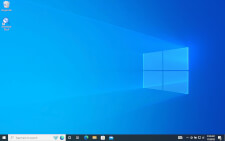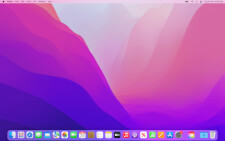Desktop
The desktop is the primary user interface of a computer. When you boot up your computer, the desktop is displayed once the startup process is complete. It includes the desktop background (or wallpaper) and icons of files and folders you may have saved to the desktop. In Windows, the desktop includes a task bar, which is located at the bottom of the screen by default. In Mac OS X, the desktop includes a menu bar at the top of the screen and the Dock at the bottom.
The desktop is visible on both Windows and Macintosh computers as long as an application or window is not filling up the entire screen. You can drag items to and from the desktop, just like a folder. Since the desktop is always present, items on the desktop can be accessed quickly, rather than requiring you to navigate through several directories. Therefore, it may be helpful to store commonly used files, folders, and application shortcuts on your desktop.
Both the Windows and Macintosh operating systems allow you to customize the appearance of your desktop. In Windows 7, you can change the desktop background and select the default desktop icons within the "Personalization" control panel. In Mac OS X 10.6, you can change the desktop background using the "Desktop & Screen Saver" system preference. You can choose what items are shown on the desktop by selecting and checking the items you want displayed.
NOTE: The term "desktop" may also be short for desktop computer.
 Test Your Knowledge
Test Your Knowledge
